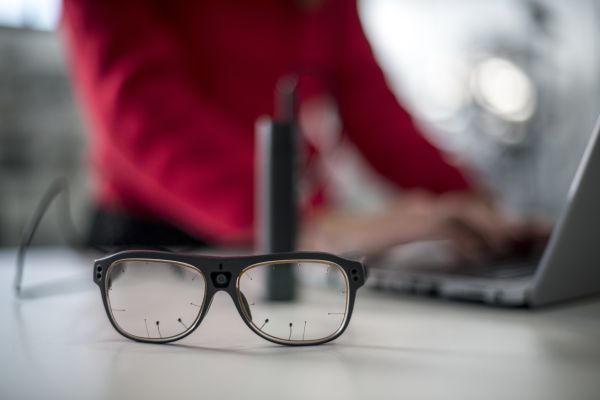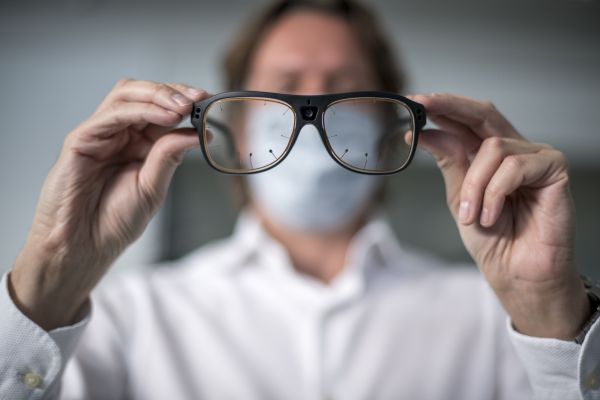According to foreign media reports, the Spanish automaker SEAT's Smart Quality team uses eye tracking glasses to track the driver's gaze. The technology uses infrared sensors, cameras and algorithms to accurately understand the direction of the driver's gaze, allowing SEAT drivers to interact with in-vehicle technology more intuitively and safely.

SEAT eye-tracking glasses (Image credit: SEAT)
SEAT is using the latest eye-tracking technology to help engineers make future driving more intuitive and safer. The automaker's eye-tracking technology uses infrared sensors, high-resolution images and complex algorithms to accurately determine where the driver's eyes are while driving.
Since the driver's primary focus is on the road ahead, this technology can help engineers design better cockpits, allowing drivers to safely locate and operate technologies on the center console, such as the infotainment system, and on the steering wheel with just a glance.

SEAT eye-tracking glasses (Image credit: SEAT)
The technology is currently being trialled by SEAT’s Intelligent Quality team with the aim of improving the safety and driving experience of future models by obtaining precise information about the driver’s interaction with the vehicle.
“We have to ensure that the driver’s interaction with the screen is kept to a minimum, and to do that, any technology the driver needs needs to be intuitive and natural,” said Rubén Martínez, Head of Smart Quality at SEAT. “We now know reliably where the driver needs to find specific information, such as battery charge or fuel level, or adjust other in-car devices.”
The department selects drivers from different backgrounds and puts them behind the wheel of a SEAT Leon. "For example, we ask the driver to turn up the temperature or change the radio station, and we analyze where the driver looks first on the screen and how long they look at it," Martínez said. "Previously, SEAT learned this information by asking questions, but the brain often misleads the driver, and where you think you are looking is not where you are really looking."
Within the Intelligent Quality department, the trial used a complex algorithm that allowed SEAT to study the eye gaze behavior of each driver, helping designers to ensure that drivers spend more time looking at the road ahead and less time operating the vehicle's controls. This technology will be key in developing the cockpit of future vehicles, determining the position, size and distribution of vehicle information and various controls in the most intuitive and safest way.
Previous article:Apple obtains four new patents, and the safety of the car's autonomous driving function becomes the biggest selling point
Next article:FEV launches SPORT framework to address cybersecurity issues
- Popular Resources
- Popular amplifiers
- A new chapter in Great Wall Motors R&D: solid-state battery technology leads the future
- Naxin Micro provides full-scenario GaN driver IC solutions
- Interpreting Huawei’s new solid-state battery patent, will it challenge CATL in 2030?
- Are pure electric/plug-in hybrid vehicles going crazy? A Chinese company has launched the world's first -40℃ dischargeable hybrid battery that is not afraid of cold
- How much do you know about intelligent driving domain control: low-end and mid-end models are accelerating their introduction, with integrated driving and parking solutions accounting for the majority
- Foresight Launches Six Advanced Stereo Sensor Suite to Revolutionize Industrial and Automotive 3D Perception
- OPTIMA launches new ORANGETOP QH6 lithium battery to adapt to extreme temperature conditions
- Allegro MicroSystems Introduces Advanced Magnetic and Inductive Position Sensing Solutions
- TDK launches second generation 6-axis IMU for automotive safety applications
- LED chemical incompatibility test to see which chemicals LEDs can be used with
- Application of ARM9 hardware coprocessor on WinCE embedded motherboard
- What are the key points for selecting rotor flowmeter?
- LM317 high power charger circuit
- A brief analysis of Embest's application and development of embedded medical devices
- Single-phase RC protection circuit
- stm32 PVD programmable voltage monitor
- Introduction and measurement of edge trigger and level trigger of 51 single chip microcomputer
- Improved design of Linux system software shell protection technology
- What to do if the ABB robot protection device stops
- Huawei's Strategic Department Director Gai Gang: The cumulative installed base of open source Euler operating system exceeds 10 million sets
- Download from the Internet--ARM Getting Started Notes
- Learn ARM development(22)
- Learn ARM development(21)
- Learn ARM development(20)
- Learn ARM development(19)
- Learn ARM development(14)
- Learn ARM development(15)
- Analysis of the application of several common contact parts in high-voltage connectors of new energy vehicles
- Wiring harness durability test and contact voltage drop test method
- Summary by an expert: Answers to 23 classic questions in power supply development!
- What is the difference between these two ways of connecting the max680 capacitor?
- 2G/GPS/Bluetooth or Zigbee IoT communication module
- COCOFLY Tutorial - Crazy Shell Drone Series · Quick Start · [4] Flight Control Firmware Burning
- The Zhongke Yihaiwei FPGA board is unboxed!
- Share a video series by Hou Jie C++
- GD32L233C-START Evaluation (3) On-chip hardware oversampling ADC
- If a device made of a single-chip microcomputer is completely powered off every half an hour, will it be easy to break down?
- Anxinke PB-02 module review (3) - PHY62XX GPIO usage guide
- How to fix the Rx FIFO overrun error?

 MM6558XD
MM6558XD











 京公网安备 11010802033920号
京公网安备 11010802033920号